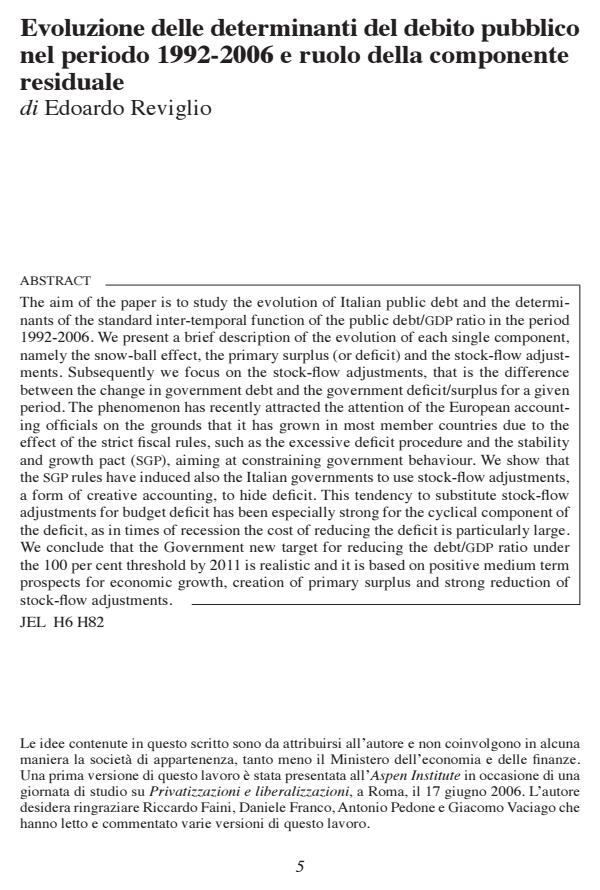Evoluzione delle determinanti del debito pubblico nel periodo 1992-2006 e ruolo della componente residuale
Journal title ECONOMIA PUBBLICA
Author/s Edoardo Reviglio
Publishing Year 2008 Issue 2007/3-4
Language Italian Pages 17 P. 5-21 File size 391 KB
DOI
DOI is like a bar code for intellectual property: to have more infomation
click here
Below, you can see the article first page
If you want to buy this article in PDF format, you can do it, following the instructions to buy download credits

FrancoAngeli is member of Publishers International Linking Association, Inc (PILA), a not-for-profit association which run the CrossRef service enabling links to and from online scholarly content.
The aim of the paper is to study the evolution of Italian public debt and the determinants of the standard inter-temporal function of the public debt/gdp ratio in the period 1992-2006. We present a brief description of the evolution of each single component, namely the snow-ball effect, the primary surplus (or deficit) and the stock-flow adjustments. Subsequently we focus on the stock-flow adjustments, that is the difference between the change in government debt and the government deficit/surplus for a given period. The phenomenon has recently attracted the attention of the European accounting officials on the grounds that it has grown in most member countries due to the effect of the strict fiscal rules, such as the excessive deficit procedure and the stability and growth pact (sgp), aiming at constraining government behaviour. We show that the sgp rules have induced also the Italian governments to use stock-flow adjustments, a form of creative accounting, to hide deficit. This tendency to substitute stock-flow adjustments for budget deficit has been especially strong for the cyclical component of the deficit, as in times of recession the cost of reducing the deficit is particularly large. We conclude that the Government new target for reducing the debt/gdp ratio under the 100 per cent threshold by 2011 is realistic and it is based on positive medium term prospects for economic growth, creation of primary surplus and strong reduction of stock-flow adjustments.
Edoardo Reviglio, Evoluzione delle determinanti del debito pubblico nel periodo 1992-2006 e ruolo della componente residuale in "ECONOMIA PUBBLICA " 3-4/2007, pp 5-21, DOI: